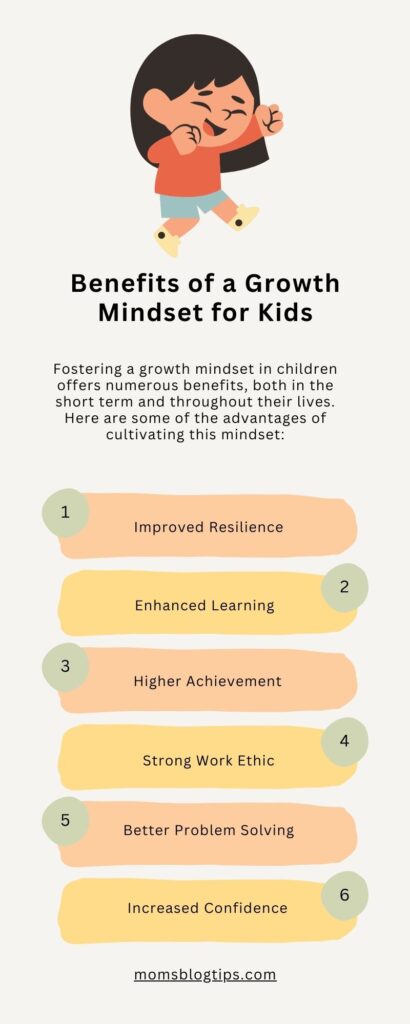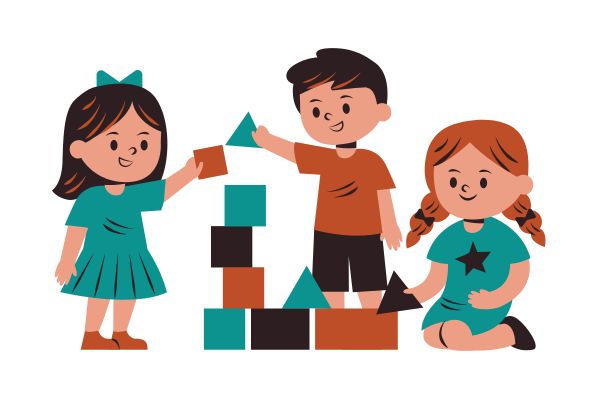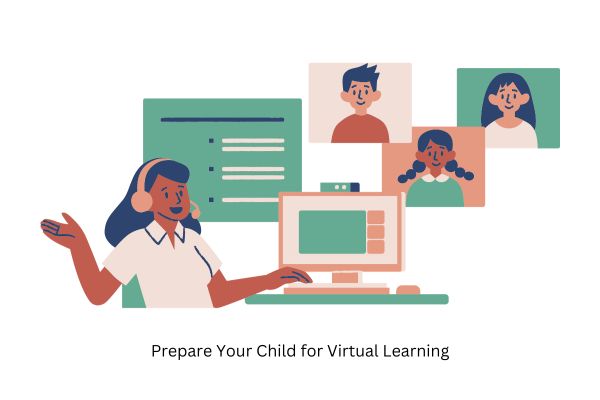Ever wonder how kids learn best? Lately, there’s been a lot of buzz about something called a “growth mindset.” Fostering a growth mindset in children has gained significant attention. A growth mindset is a belief system that encourages the idea that abilities and intelligence can be developed through dedication, hard work, and learning. This guide delves into what a growth mindset is, explores its benefits for children, and provides practical strategies on how to nurture this mindset in young individuals.
What Is a Growth Mindset?
A growth mindset, a term coined by psychologist Carol Dweck, contrasts with a fixed mindset. In a fixed mindset, individuals believe that their abilities, intelligence, and talents are inherent and unchangeable. On the other hand, a growth mindset is characterized by the belief that these qualities can be developed over time. Here are some key characteristics of a growth mindset:
- Embracing Challenges: Those with a growth mindset see challenges as opportunities for growth. They understand that facing difficulties can lead to new skills and knowledge.
- Persistence: Children with a growth mindset are more likely to persevere through obstacles. They don’t give up easily and are more resilient in the face of setbacks.
- Effort: They recognize that putting in effort is a path to mastery. The concept of “trying hard” is seen as a virtuous endeavor, not a sign of weakness.
- Learning from Mistakes: Rather than fearing failure, those with a growth mindset view it as a stepping stone to improvement. They learn from their mistakes and setbacks.
- Inspired by Others: They take inspiration from the success of others and see them as role models. They believe that they too can achieve greatness through learning and hard work.
What Are the Benefits of a Growth Mindset for Kids?

- Improved Resilience: Children with a growth mindset are more resilient in the face of challenges. They understand that setbacks are part of the learning process and bounce back with renewed determination.
- Enhanced Learning: A growth mindset encourages a love for learning. Children become more open to trying new things and are motivated to expand their knowledge and skills.
- Higher Achievement: When kids believe that their abilities can be developed through effort, they tend to perform better academically and in various other pursuits.
- Strong Work Ethic: A growth mindset fosters a strong work ethic. Children learn the value of hard work, persistence, and dedication, which are essential for success in any field.
- Better Problem Solving: With a growth mindset, children develop better problem-solving skills. They become more creative in finding solutions to complex issues.
- Increased Confidence: As children see their progress and development over time, they gain self-confidence. This confidence translates into a willingness to take on challenges and achieve their goals.
Ways To Foster a Growth Mindset in Children
Now that we understand the importance of a growth mindset, let’s explore practical ways to instill this mindset in children:
Model a Growth Mindset: Modeling a growth mindset means not just talking the talk but walking the walk. Children often learn best by example, so it’s essential to demonstrate a growth mindset in your daily life. Share your challenges and how you tackle them. Explain the effort and learning process that goes into overcoming obstacles. Show your child that you, too, are on a journey of growth and development. It might involve:
- Discuss your own goals and how you’re working towards them.
- Sharing stories of how you faced challenges, made mistakes, and learned from them.
- Being open about areas where you’re continually learning and improving, emphasizing that learning is a lifelong journey.
Praise Effort, Not Intelligence: When offering praise, focus on effort and perseverance rather than innate abilities. It encourages your child to associate success with hard work. Specific ways to implement this include:
- Instead of saying, “You’re so smart,” say, “I’m proud of how hard you worked on that.”
- Highlight the process, not just the result. Ask questions like, “What strategies did you use to solve that problem?”
- Encourage your child to see effort as a positive quality and emphasize that everyone can improve with dedication and learning.
Encourage Curiosity: Cultivating curiosity in your child is a powerful way to nurture a growth mindset. Encouraging curiosity involves creating an environment that stimulates learning and exploration:
- Provide a variety of books, educational materials, and hands-on experiences that align with your child’s interests.
- Ask open-ended questions to spark their curiosity, such as “Why do you think that happens?” or “What would you like to learn more about?”
- Support hobbies and interests that your child is passionate about, allowing them to delve deeper into subjects they find fascinating.
Celebrate Progress: Recognizing and celebrating your child’s progress, no matter how small reinforces the idea that improvement is possible. It also motivates them to keep trying:
- Use positive reinforcement, such as praise or small rewards, to acknowledge their efforts and achievements.
- Create a progress journal or chart to visually track and celebrate milestones.
- Encourage your child to reflect on their journey, focusing on how far they’ve come and the improvements they’ve made.
Set Realistic Expectations: Setting realistic goals and helping your child create a plan to achieve them is essential for a growth mindset. It involves:
- Collaborating with your child to set specific, achievable goals.
- Breaking down larger goals into smaller, manageable steps to avoid feeling overwhelmed.
- Teaching your child to recognize that success often requires incremental progress and patience.
Teach the Power of “Yet”: The word “yet” is a powerful tool for instilling a growth mindset. When your child says they can’t do something, add “yet” to emphasize the growth potential. For example:
- If your child says, “I can’t solve this math problem,” respond with, “You can’t solve it yet, but with practice and learning, you’ll get better.”
- This simple linguistic shift helps your child view challenges as opportunities for growth and development.
Provide Constructive Feedback: When your child faces challenges or makes mistakes, offering constructive feedback is crucial. This feedback should focus on learning opportunities rather than failure. Some ways to do this include:
- Avoid criticism or blame, and instead ask questions that encourage your child to reflect on their actions and decisions.
- Ask questions like, “What can you learn from this experience?” or “What would you do differently next time?”
- Emphasize that mistakes are part of the learning process and provide guidance on how to improve.
Encourage Perseverance: Teach your child that perseverance is a key ingredient for success. Share stories of famous individuals who faced failures and setbacks but continued to work hard and eventually achieved their goals. It can involve:
- Reading biographies or watching documentaries about role models who overcame challenges.
- Sharing personal stories of your perseverance and how it led to your successes.
- Emphasizing that setbacks are temporary and that with determination, one can overcome them.
Create a Supportive Environment: Surround your child with a supportive ecosystem that reinforces the values of a growth mindset. It includes:
- Encouraging your child to form positive relationships with teachers, mentors, and peers who also promote a growth mindset.
- Fostering an environment where your child feels comfortable discussing their challenges and seeking guidance.
Be Patient: Developing a growth mindset takes time. Be patient with your child and understand that it’s a journey. Reinforce these concepts consistently as they grow and face new challenges. Remind them that growth is an ongoing process and learning from experiences is part of the path to success.
Related: How to Talk to a Reluctant Teen: Building Bridges of Communication
Conclusion
Fostering a growth mindset in children is a crucial aspect of their development. It empowers them to embrace challenges, persist through difficulties, and believe in their potential for growth and success. Parents and educators can help children unlock their full potential and set them on a path to a fulfilling and successful life by modeling this mindset and employing these strategies. Remember, the journey to a growth mindset may be ongoing, but the benefits it provides are lifelong.





